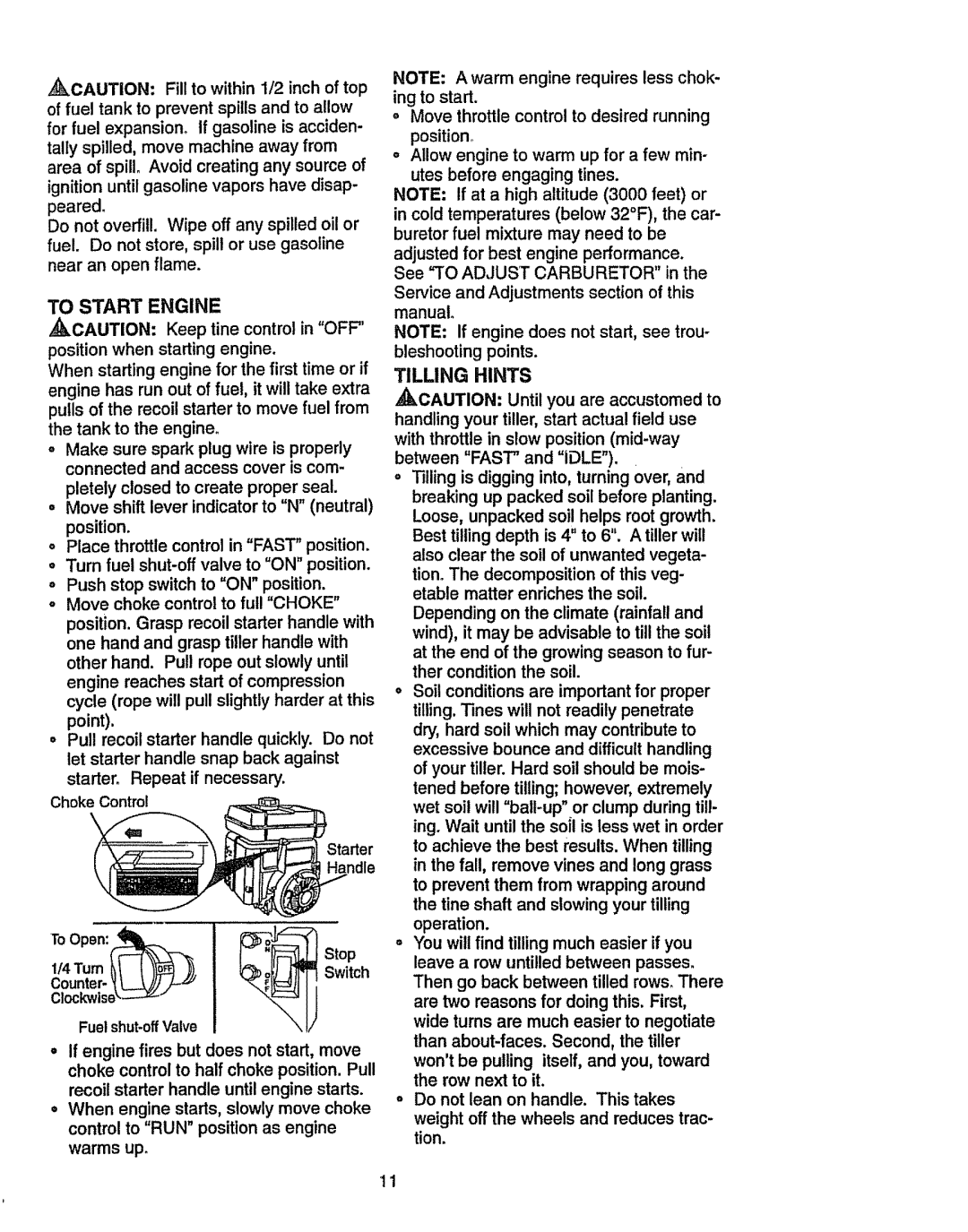917.2933 specifications
The Craftsman 917.2933 is a versatile lawn tractor designed for homeowners seeking an efficient, powerful, and reliable machine for maintaining their lawns. One of its standout features is the robust 19.5 horsepower Briggs & Stratton engine, which provides ample power to tackle various mowing tasks with ease. This engine is known for its reliable performance and efficiency, ensuring that the machine can handle even challenging terrains.Equipped with a 42-inch cutting deck, the Craftsman 917.2933 allows for a broad cutting path, making it ideal for medium-sized yards and larger lawns. The adjustable cutting height, which ranges from 1.5 to 4 inches, gives users the flexibility to customize the mowing experience based on the type of grass and the desired look of the lawn. This feature is particularly beneficial for maintaining different grass types and achieving a well-manicured appearance.
The Craftsman 917.2933 is designed with user comfort in mind. Its ergonomic seating and easy-to-reach controls ensure a comfortable ride, even during extended mowing sessions. The machine also features a foot-controlled hydrostatic transmission, which provides a smooth driving experience and allows users to easily adjust the speed without having to manually shift gears. This convenience enhances maneuverability, particularly in tight spaces and around obstacles.
Another notable characteristic of this lawn tractor is its durability. The steel frame and heavy-duty components are built to withstand regular use, ensuring longevity and reduced maintenance needs. Additionally, the easy-access design simplifies routine maintenance tasks, such as oil changes and filter replacements.
For added versatility, the Craftsman 917.2933 can accommodate a range of attachments, including baggers, mulch kits, and hauling accessories, making it a multifunctional tool for lawn care. This adaptability enhances its value, allowing homeowners to maximize its use throughout the seasons.
In conclusion, the Craftsman 917.2933 is a capable and reliable lawn tractor that combines power, comfort, and durability. Its powerful engine, adjustable cutting deck, and user-friendly features make it an excellent choice for those looking to maintain their lawns efficiently. With additional versatility provided by compatible attachments, this lawn tractor stands out as a well-rounded option for homeowners seeking an effective lawn care solution.

